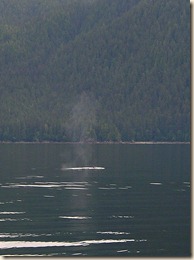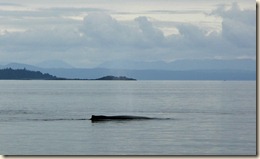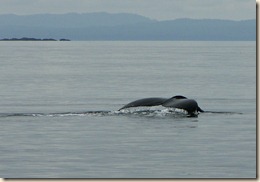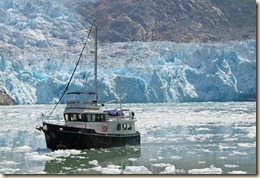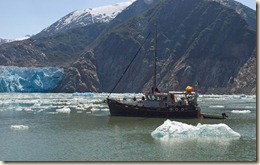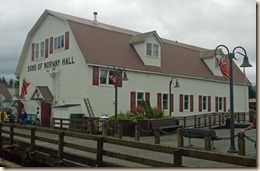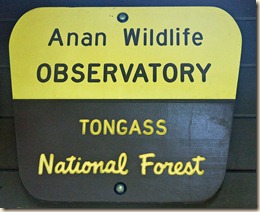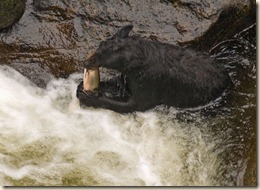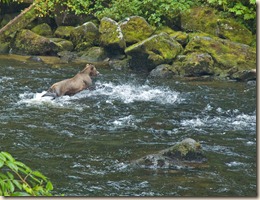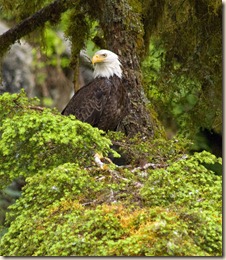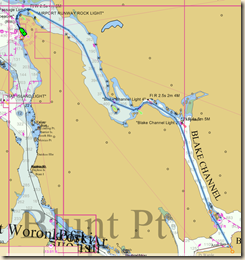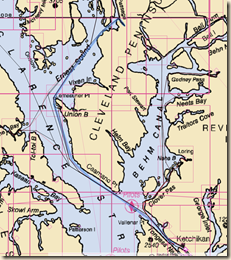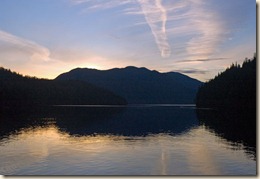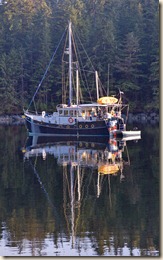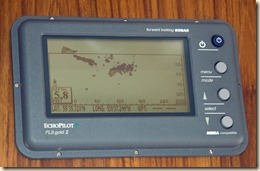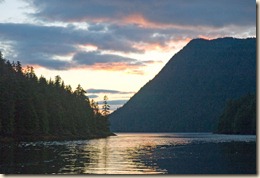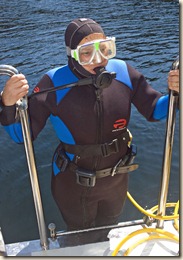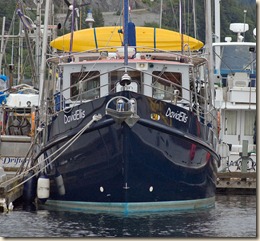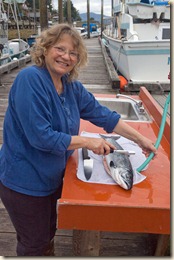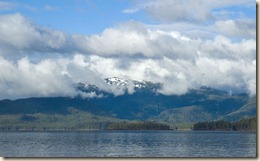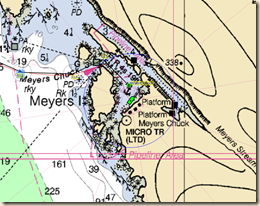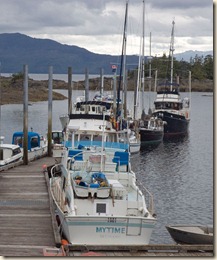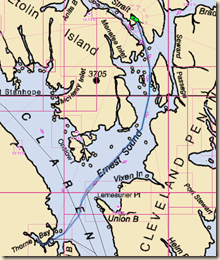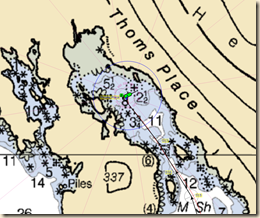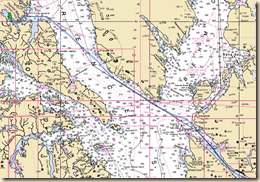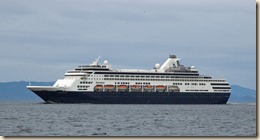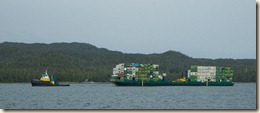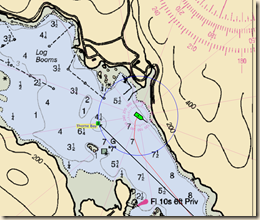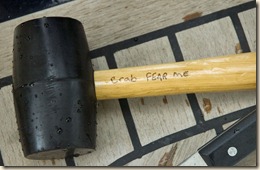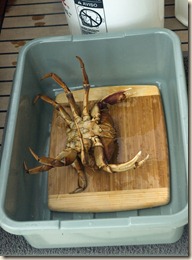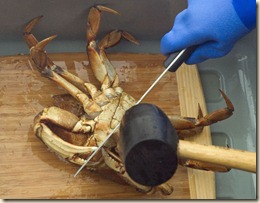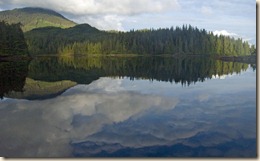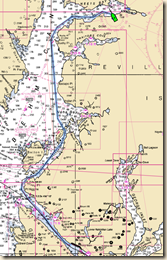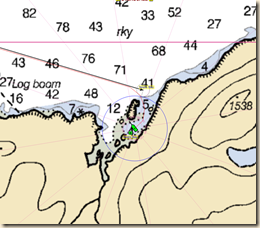The Internet connection here is very poor so no pictures at this time.
We arrived late this morning in Auke Bay, about 7 miles NW of Juneau proper. The marinas near downtown Juneau have very little transient moorage and the docking is very tight. Most cruising boats like us tend to head to the larger facility in Auke Bay.
The previous two days have been long but really wonderful. The good weather that we have had certainly has contributed to it.
On Sunday, 7/25, we left Petersburg at 4:30 AM and rode the ebb out of Wrangell Narrows and up Frederick Sound. The day started out foggy but by 9 AM it was burning off nicely. The winds were virtually non-existent so the water was glassy.
Shortly after we passed Cape Fanshaw, where Stephens Passage from the north meets Frederick Sound the humpback whale action took off. During the couple of hours or so we were in that area, we must have had sightings of more than 40 different whales. Our buddy boat the David Ellis even had a couple of humpback whales bubble feed next to them.
After about 74 miles of cruising, our anchorage that night was the very lovely Tracy Arm Cove (aka “No Name Cove”), just north and inside of the entrance to Tracy Arm. Marcia prepared crab-shrimp cakes as an appetizer for everyone. They were a real hit.
The next day, 7/26, we traveled up Tracy Arm. My best description of the inlet is Yosemite Valley with 1,000 feet of water in it. It is a beautiful fiord with steep glacial carved mountains on either side.
At the head of the inlet’s two arms are the North and South Sawyer Glaciers. The South Sawyer Glacier is a tide water glacier which means the bottom of its snout is below the surface of the water. As the glacier calves chunks of ice off the snout they crash into the water. The face of the glacier is at least 100 feet so there are some big chunks that fall off.
Even at our anchorage at the entrance of Tracy Arm there was ice floating in the inlet or grounded on shore. The further we traveled up Tracy Arm the more the ice increased. You avoid hitting all but the smallest (shoe box size) chunks of ice. One of the last things you want to do is damage either your propeller, rudder or one of your depth transducers by bumping into a chuck of ice the size the size of a car, weighing several tons. Since 90% of the volume of ice is below the water, you do your best to avoid all ice. Eventually, we stopped about 3/4 of a mile from the South Sawyer Glacier because the ice was packed in so much that we couldn’t get through without turning ourselves into “snow plows.”
It is 20+ miles up Tracy Arm and you have to do that same distance to get back out. We than ran another 25+ miles up the coast to Taku Harbor where there is an Alaska state dock. We arrived there about 8:30 PM making for another long day.
We left today at 4:30 AM in order to have as much time in Juneau for the Nagle’s nieces to visit a few Juneau sites before they leave tomorrow. While the trip was about 33 miles, it was slow on account of the continual opposing current. That compensates for the good current we experience a couple of days ago.
While they were touring, Marcia got on the phone and obtained a permit for cruising Glacier Bay National Park, about 50 miles west of here. The park service only allows 25 private cruising boats in the park at a time. Our date of entry is Sunday, August 1. More details of our plan later.
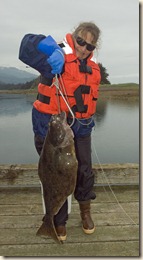 Marcia brought it close to the boat, I gaffed it then Marcia put a couple of shark hooks in it to keep it from getting away. From hearing warning tales about not putting a live halibut in the dinghy, we tied the shark hooks off to the side of the boat and slowly motored back to our boat. We brought the fish on the dock and measured it at 31 inches. Based on the table of standard halibuts, the fish weighed about 11-13 pounds.
Marcia brought it close to the boat, I gaffed it then Marcia put a couple of shark hooks in it to keep it from getting away. From hearing warning tales about not putting a live halibut in the dinghy, we tied the shark hooks off to the side of the boat and slowly motored back to our boat. We brought the fish on the dock and measured it at 31 inches. Based on the table of standard halibuts, the fish weighed about 11-13 pounds.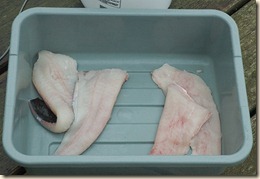 Besides the halibut which Marcia cleaned and trimmed up, we managed to get three keeper crabs in the two times we dropped the crab pot in Swanson Harbor. Marcia then cleaned, cooked, picked and froze the crabs’ meat.
Besides the halibut which Marcia cleaned and trimmed up, we managed to get three keeper crabs in the two times we dropped the crab pot in Swanson Harbor. Marcia then cleaned, cooked, picked and froze the crabs’ meat.